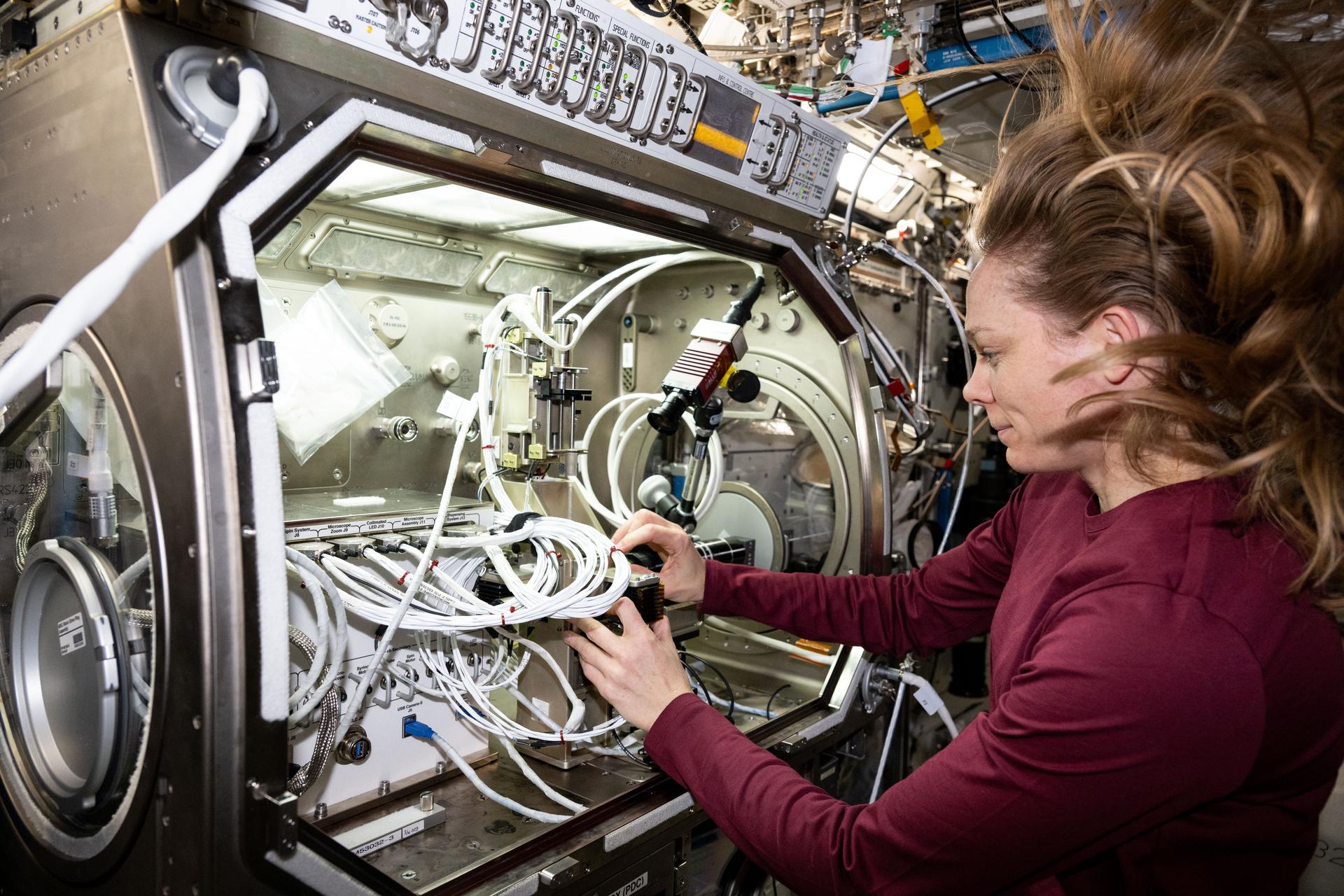NASA astronaut Nichole “Vapor” Ayers, currently serving as a flight engineer on Expedition 73 aboard the International Space Station (ISS), is one of a handful of astronauts testing various experiments at the station.
As the ISS sits in low Earth orbit, its microgravity setting allows researchers like Ayers to try a variety of studies, from growing plants to creating miso paste to monitoring bone density changes to watching weird weather from space.
What is it?
Ayers recently completed a set of experiments inside the Microgravity Science Glovebox. There she carried out the Ring Sheared Drop investigation, an experiment that looks at protein-based liquids in microgravity without the liquid being contained to a specific space. By allowing droplets to move freely, the study explores how surface tension, viscosity and other forces affect fluid dynamics in microgravity.
Where is it?
The Microgravity Science Glovebox is located in the Destiny laboratory module on the ISS.

Why is it amazing?
Ayers’ recent experiment could have big implications for drug manufacturing, potentially helping researchers design more stable drugs. The experiment could also reveal insights about 3D printing in space, as the process uses liquids to create custom-made objects.
Ayers is part of NASA’s Expedition 73, a seven-person mission that began on April 19, 2025 and will end in November when the crew returns to Earth. During that time, the Expedition 73 team has welcomed visitors from the private Axiom-4 mission, which is running dozens of experiments in the two weeks the four astronauts will be at the space station.
Want to learn more?
You can read more about the International Space Station and the many experiments happening there.



